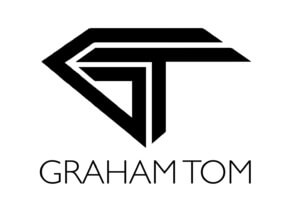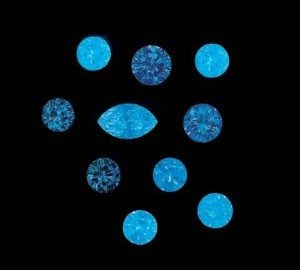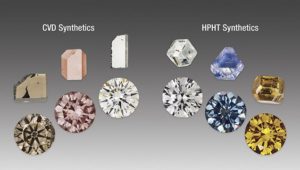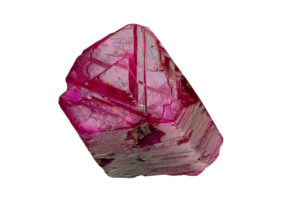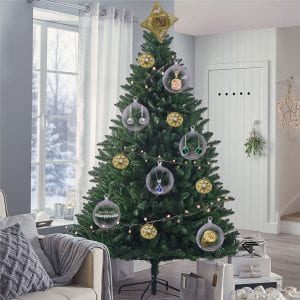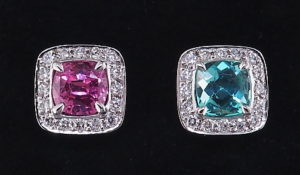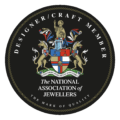If you have bought a diamond or are considering buying a diamond for the first time, you may have read varying reports that fluorescence can either enhance or devalue the diamond. Fluorescence is defined as the visible light some diamonds emit when exposed to long wave ultraviolet lighting (UV). The colour emitted with a diamond under UV lighting can be a variance of blue to no colour at all. With fancy colour diamonds such as the pinks, blues, yellows, the fluorescence colour emitted can vary and I will address this in another blog. The photos below of fluorescent diamonds illustrate the variance in strength of blue colour fluorescence under UV lighting.
Fluorescence in a diamond is not unusual and typically between 25 and 30% of colourless diamonds sent to a grading laboratory may manifest some degree of fluorescence. On a GIA (Gemmological Institute of America) Certificate and other laboratory certificates, the strengths of fluorescence are noted as none, faint, medium, strong or very strong blue.
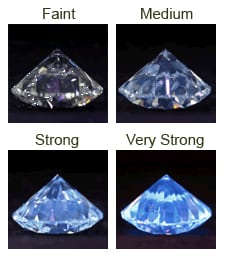
Fluorescence is a natural characteristic within a diamond and there are varying opinions as to how this impacts on appearance of a diamond. For example colourless diamonds with high colours D-F that have medium, strong, very strong fluorescence may appear oily, hazy or milky. Faint or medium fluorescence may have no impact at all on appearance of high colour diamonds. The near colourless diamonds colours G-J that have medium, strong or very strong fluorescence can improve the appearance of diamond and may look whiter and brighter. With faint yellow diamonds K-M, strong or very strong fluorescence can significantly impact on appearance of diamond and look much whiter and brighter .According to the GIA, only 10% of 30% of diamonds that exhibit fluorescence actually impact on appearance. It is essential that every diamond that has fluorescence should be judged on its own merits. If you are offered a fluorescent diamond I would recommend you apply the following guidelines.
- Certificate – Ensure the diamond is accompanied by a reputable certificate from a recognised laboratory, for example on a GIA Report or Dossier. Make a note of the colour (say from D to J colour) and note strength of fluorescence (say from Faint to Very Strong). Ask your jeweller to explain how the fluorescence impacts on the fire and dispersive brilliance of the diamond.
- Pricing – Colourless and near colourless diamonds that have fluorescence can be bought with varying discounts off market prices. Fluorescence in faint yellow diamonds can actually carry a premium on market pricing. Again, ask your jeweller for advice.
- Selling a fluorescent diamond – If you want to sell your fluorescent diamond at a later date, even with a very good certificate, it may not be an easy to sell stone. You need to weigh up and decide if buying a fluorescent diamond at a reduced price offers you long term value.
To summarise, you need to decide what variables of a diamond are important to you. If the benefits of your partner wearing a G-J colour fluorescent diamond with a brighter, whiter appearance outweighing the more expensive price of a similar sized diamond with no fluorescence and she is happy then you really have true value!
